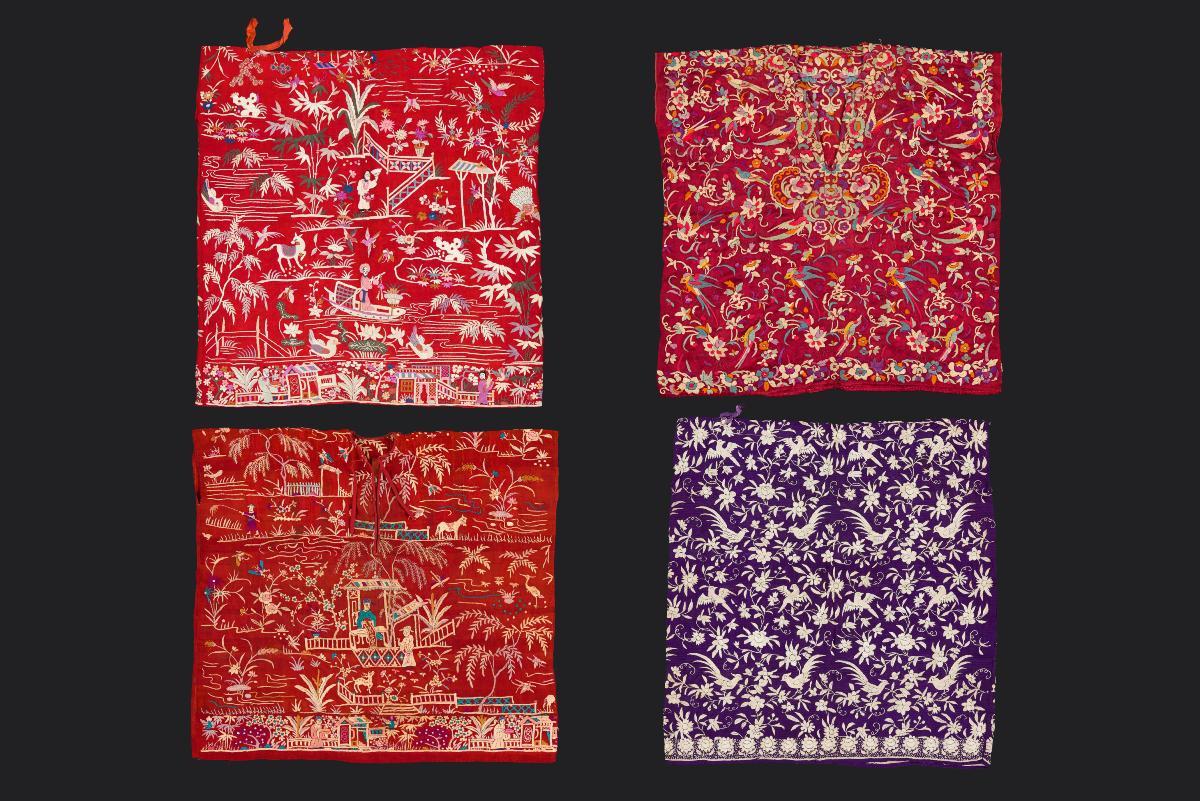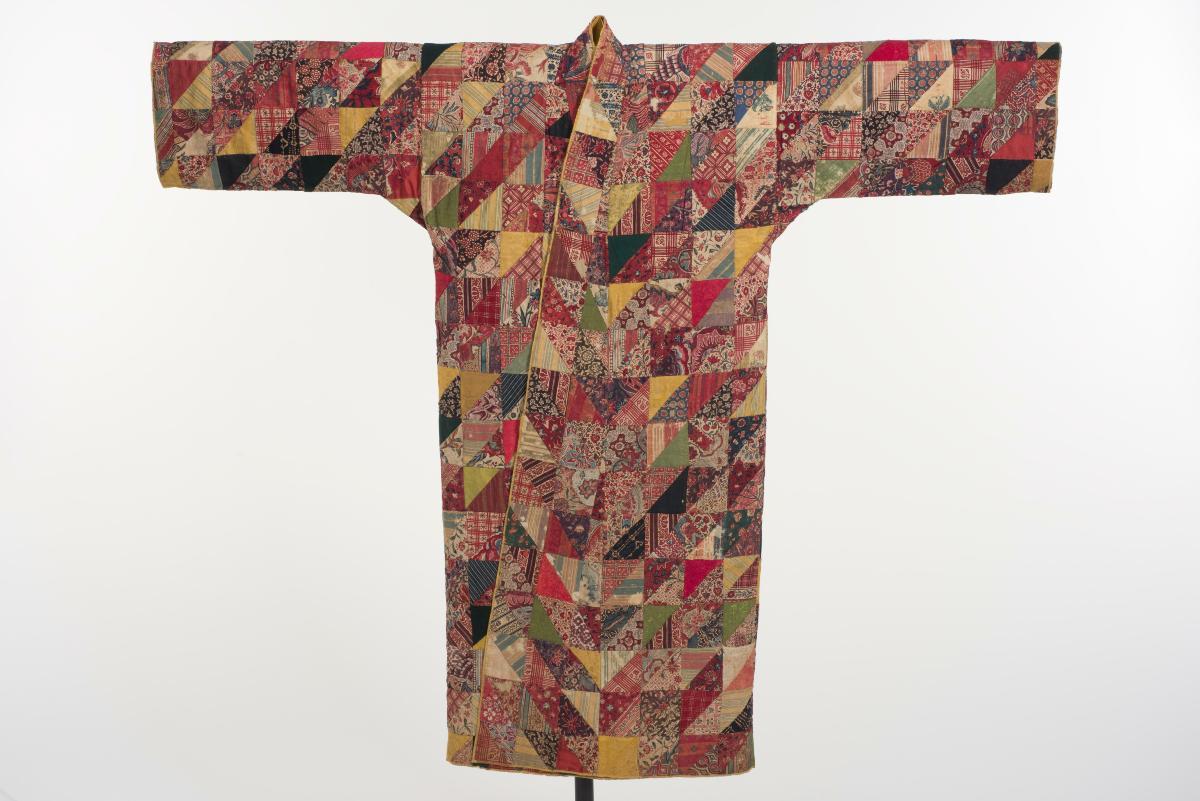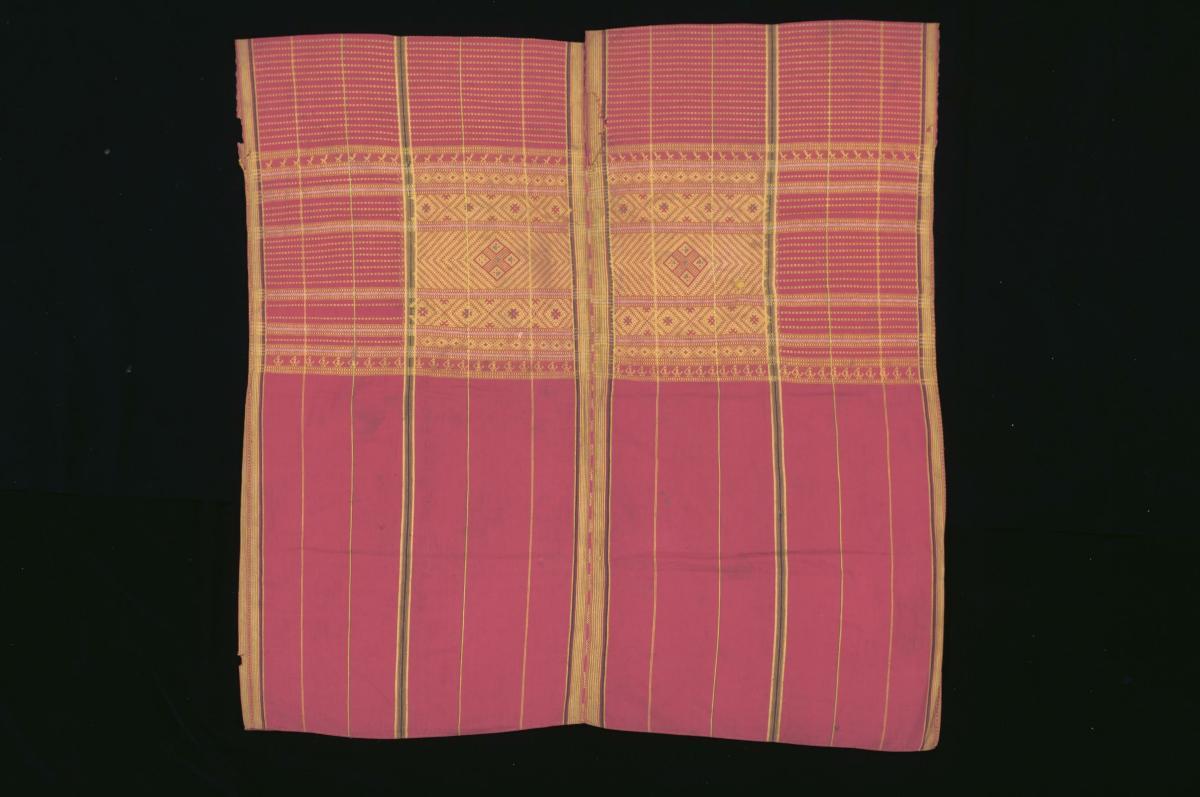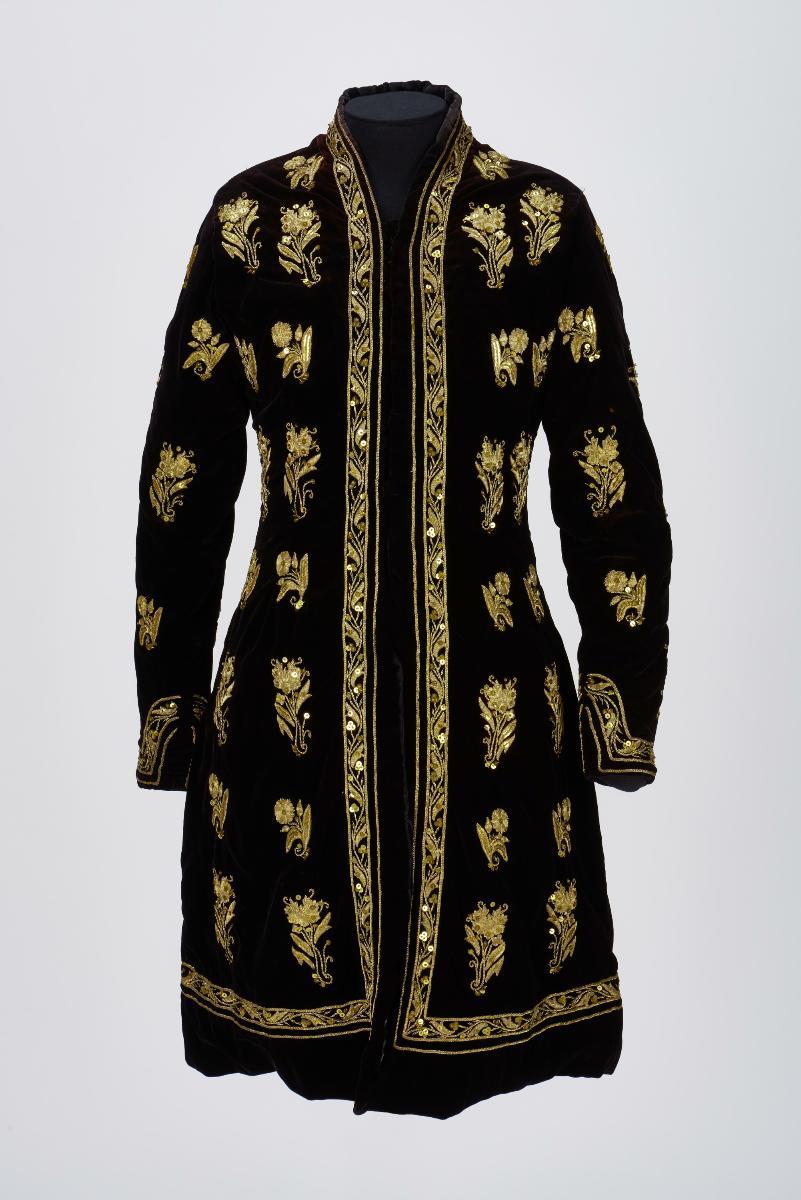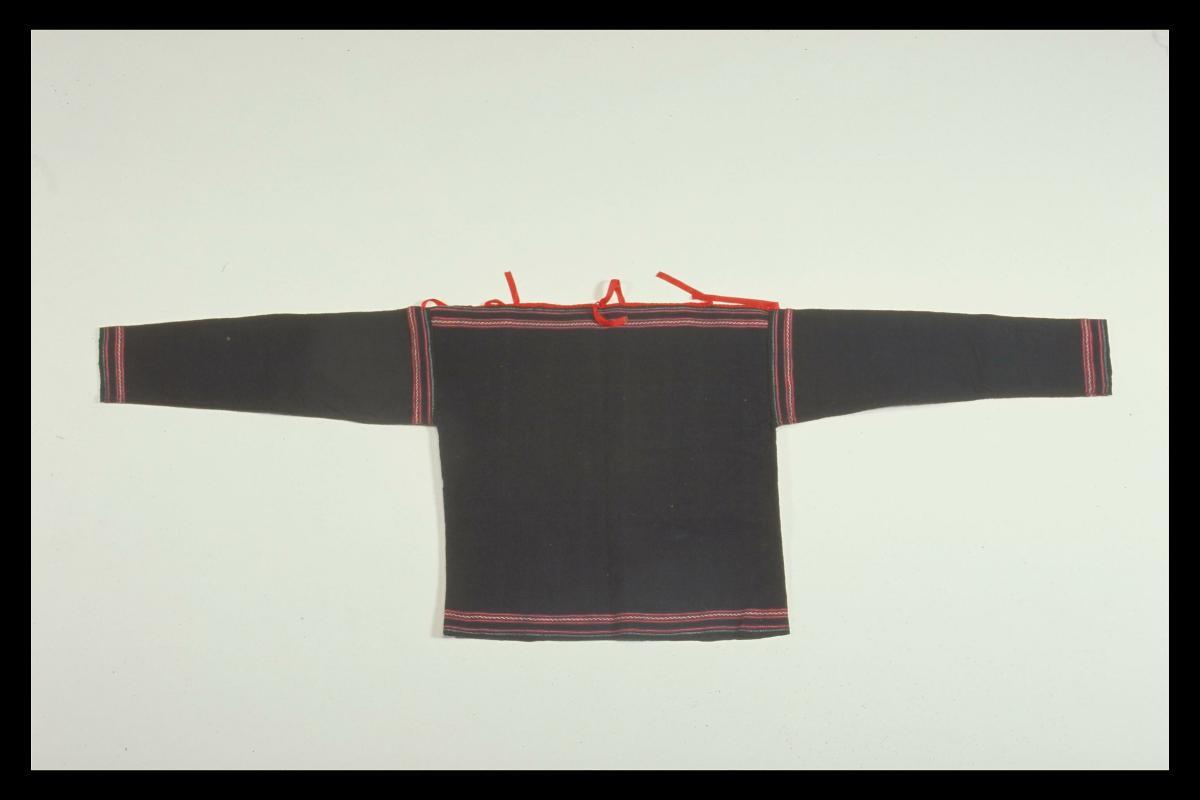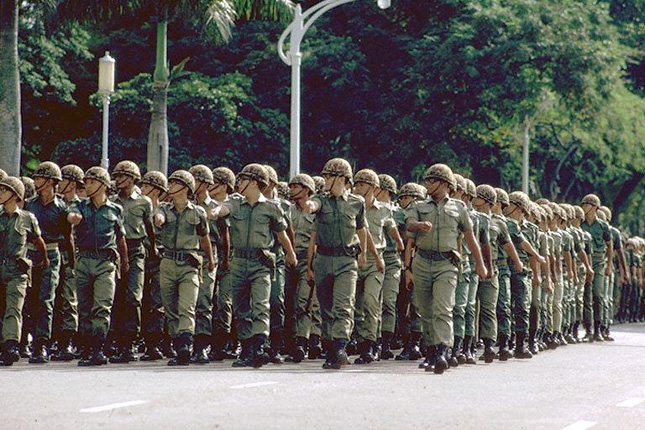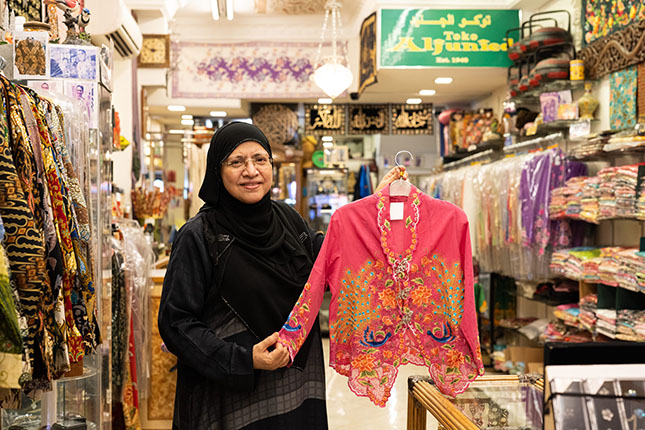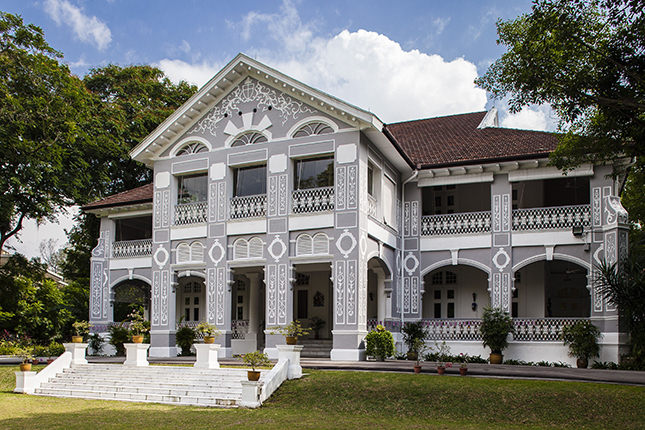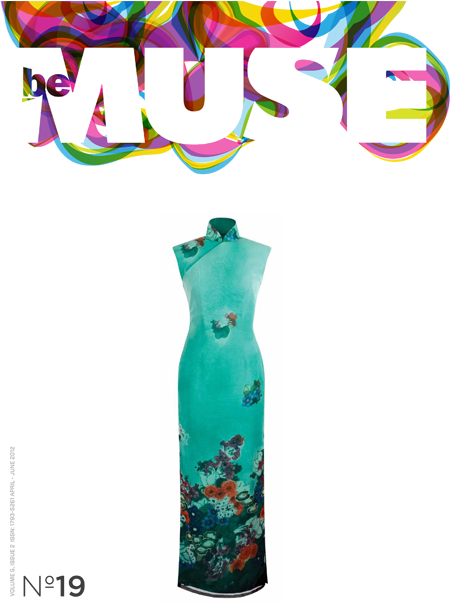This set of tunics (jhablas) would have been made for Parsi (Zoroastrian) children, to be worn for their Navjote (initiation ceremony). The tunics have distinctly Chinese style embroidery and motifs, attesting to the contact that the Parsi community had with China during the 19th and 20th centuries. The Parsi community was one of the few Indian mercantile communities to have established trade contact with China, during the Colonial era. Parsi traders commissioned Chinese embroiderers to produce borders and fabrics that were incorporated into Parsi attire - borders for saris, fabric for ijar pants, and cloth for children's tunics. Motifs included pheasants, flowers, pagodas, ponds, and men and women.




